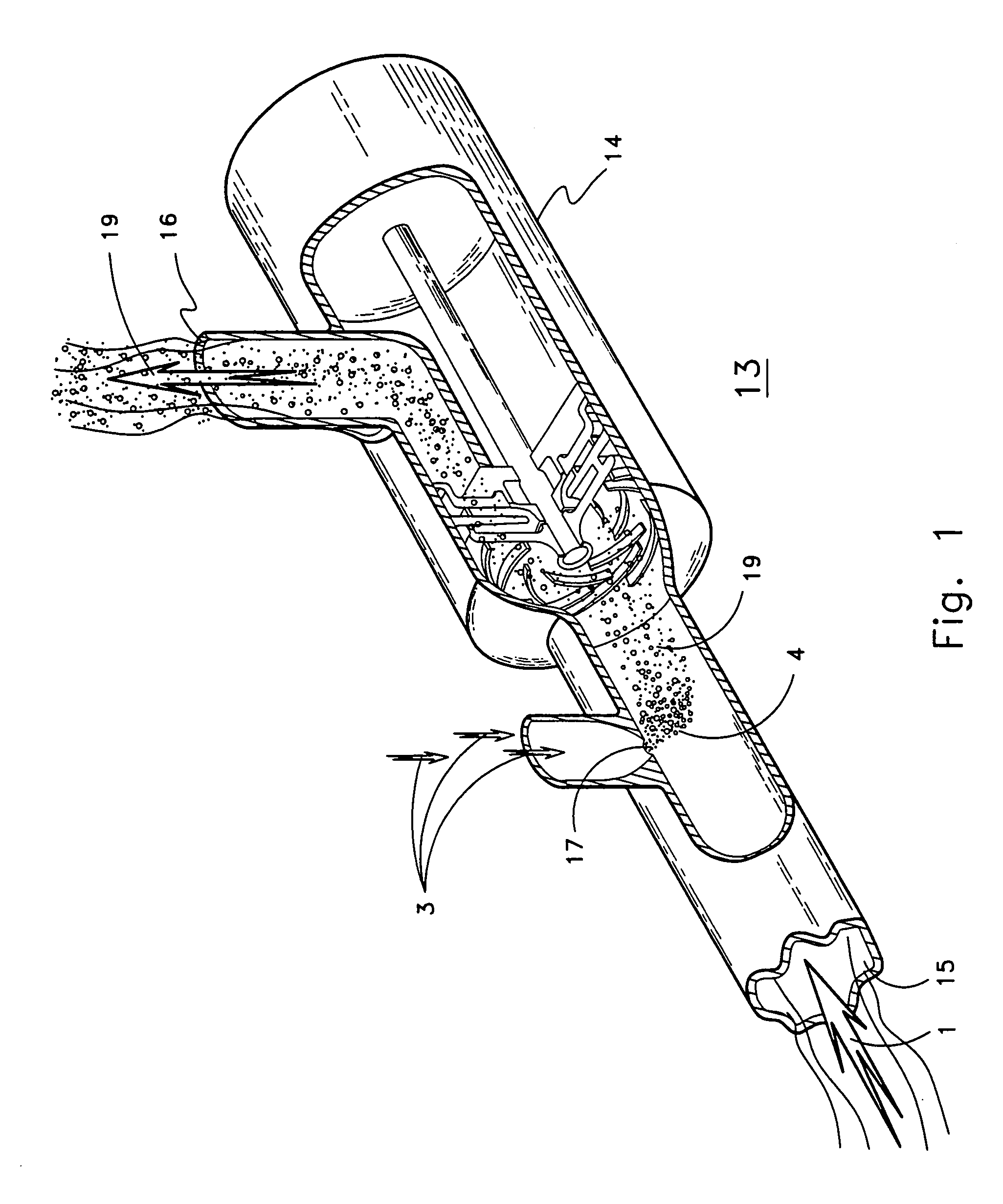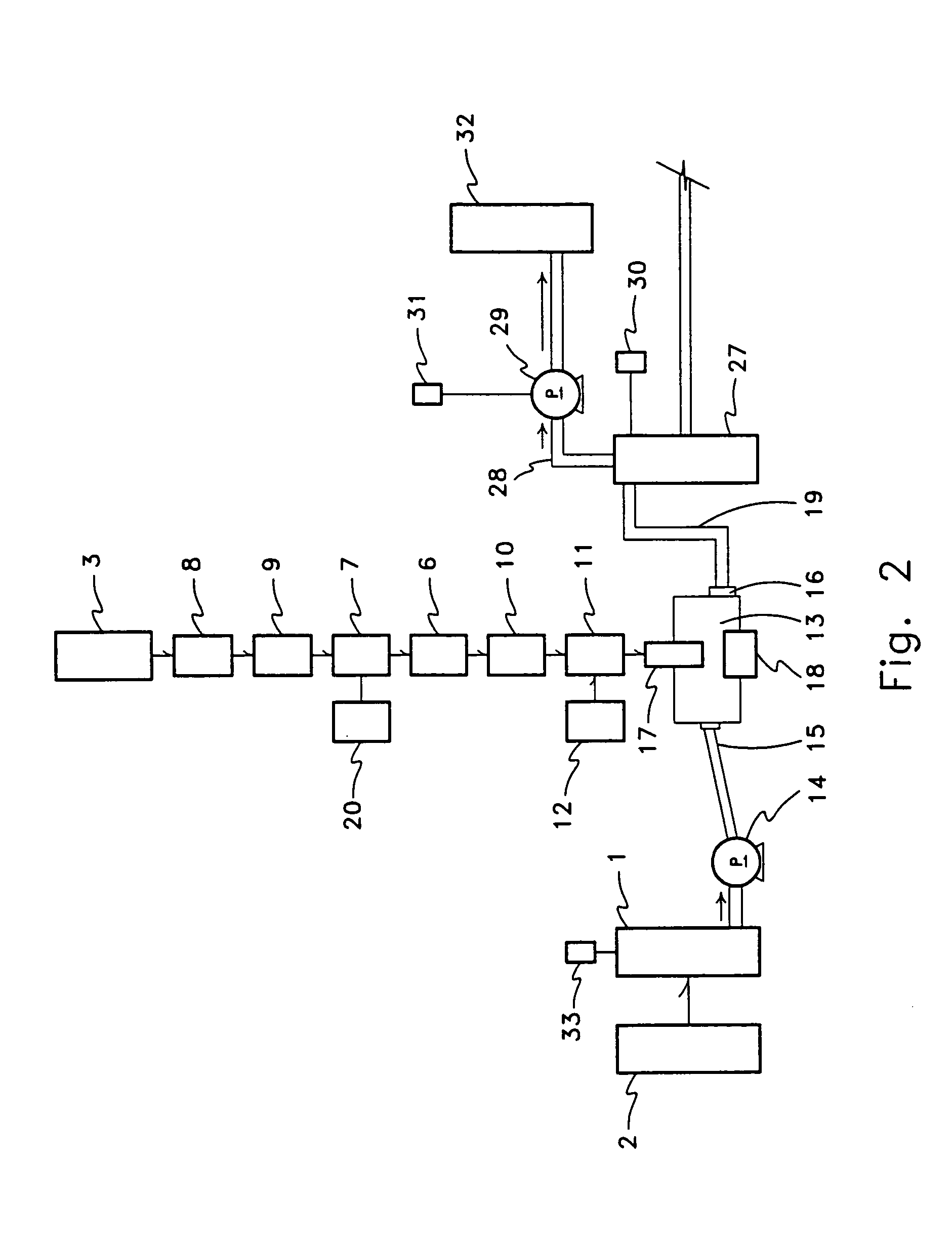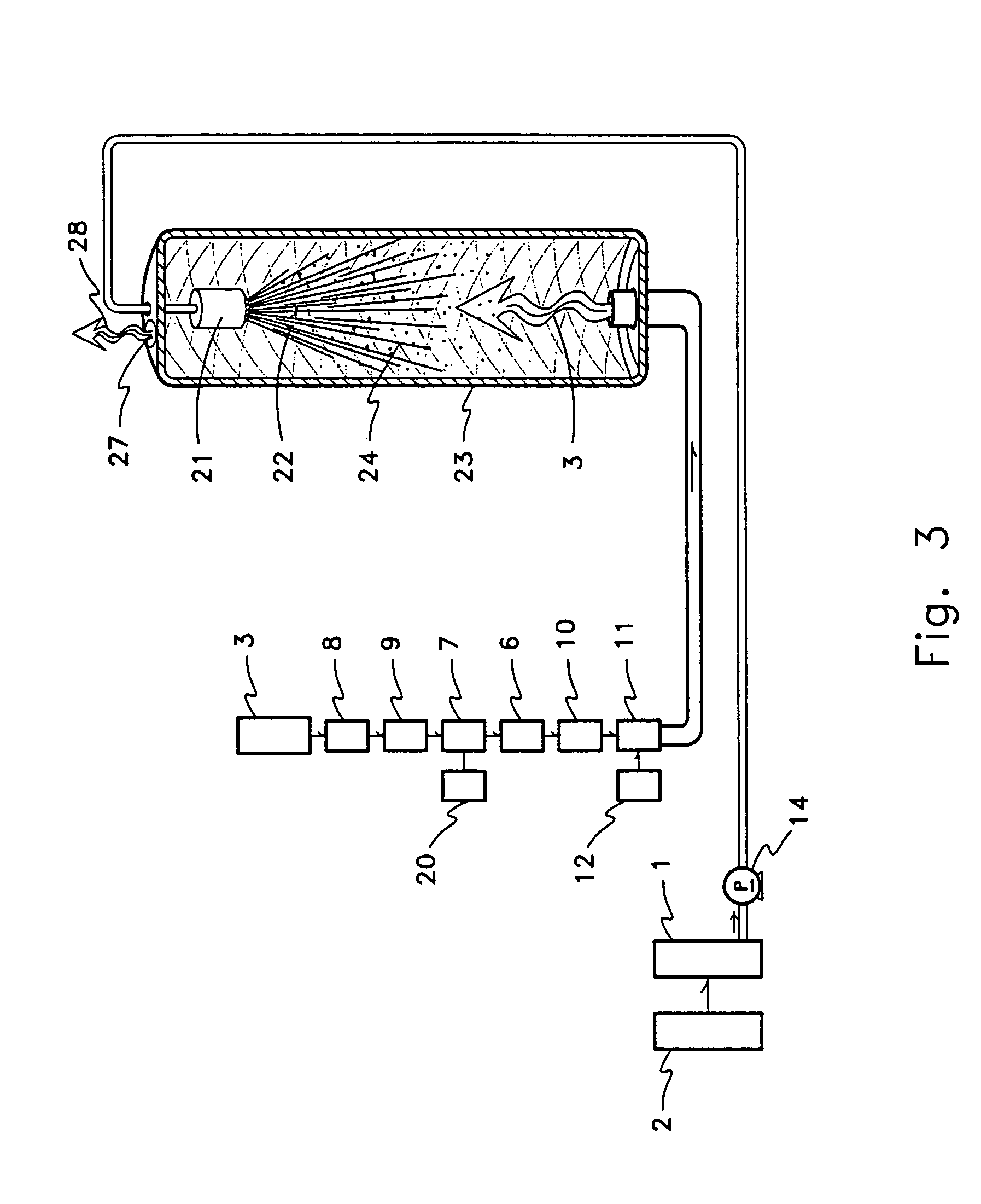These non-
sucrose substances are often highly colorized, thermally unstable, or otherwise interfere with certain
processing steps or adversely
impact the quality or quantity of the sugar product resulting from the purification process.
This results in a portion of the soluble non-
sucrose materials that were not affected by preceding addition of base or
lime to decompose.
Because it may be difficult to get the sucrose or sugar crystals to grow well, some seed crystals of sucrose or sugar are added to initiate
crystal formation.
However, even though
process systems for the purification of juice from plant materials have been established and improved upon for at least 1000 years, and specifically with regard to sugar beets, have been improved upon for more than 100 years, and even though there is great incentive to generate improvements relating to sugar
process systems, significant problems still remain with regard to the
processing of juices obtained from plant material.
A significant problem with conventional sugar
processing systems can be the expense of obtaining and adding base, such as
calcium oxide, to process liquids to raise the pH of process liquids or to reduce the concentration of acids.
Finally, the investment in equipment and labor associated with the use of
calcium oxides incrementally increases as the amount used increases.
This may involve the incremental expenditure for the additional labor to mix additional amounts of
calcium hydroxide with process liquids, or it may involve an incremental expenditure to
use equipment having greater loading capacity or having greater power, or the like.
Another significant problem with the production of and use of base, such as lime, in conventional sugar
process systems can be disposal of excess base, spent lime, or process byproducts formed with added base.
However, the cost of a recalcining
kiln and the
peripheral equipment to recalcine spent lime can be substantially more expensive than a
kiln for calcining limestone.
As such, not only can recalcined lime be expensive to generate, it can also require the use of substantially larger gas conduit to transfer the generated CO2 from recalcining spent lime, larger conveying equipment to move the recalcined lime, larger
carbonation tanks, or the like.
Also whether spent lime is disposed of in ponds, landfills, or by recycling, the greater the amount of lime utilized in a particular process
system, generally the greater the expense of disposing the spent lime.
Another significant problem with conventional sugar processing systems that use base or lime to purify or clarify process liquids may be an incremental decrease in process system
throughput corresponding with an incremental increase in the amount of lime used in processing liquids.
One aspect of this problem may be that there is a limit to the amount of or rate at which lime can be produced or provided to juice process steps.
The amount of lime produced may be limited in by availability of limestone,
kiln capacity, fuel availability, or the like.
Another aspect of this problem can be that the amount of lime used in the process system may proportionately reduce volume available for juice in the process system.
Badly deteriorating plant material may generate large amounts of organic acids, primarily lactic,
acetic acid, as well as
citric acid.
Another significant problem with conventional sugar process systems may be that juice(s) or process liquids may contain other undesired components, or components that are at concentrations that are undesirably high.
Another significant problem with conventional sugar processing systems may be the formation of scale in containment vessels, such as, evaporators or sugar
crystallization equipment.
The process of removing scale from the surfaces of equipment can be expensive, including, but not limited to, costs due to production slowdowns and efficiency losses, or the reduction in the effective life of equipment.
Another significant problem with convention sugar processing systems may be the lack of recognition that juice extraction equipment or processes used to obtain juice from plant material can lower the pH of the extracted juice.
With respect to diffusors used to extract juice from
sugar beet root, there may have been a failure to recognize that the pH value of
sugar beet juice or process liquids can be significantly lowered during the
diffusion process.
Another aspect of this problem may be that there has been a lack of recognition that different
diffusion apparatus or different
diffusion methods used to remove juice from
sugar beet material differentially alters or reduces the pH of the juice or process liquid obtained.
Another significant problem with conventional sugar processing systems may be that organic compounds, inorganic compounds, organic acids,
inorganic acids, dissolved gases, or other materials contained within extracted juice or process liquids, whether of natural origin or added to the extracted juice or process liquids, may not be allowed to move toward equilibrium to with atmospheric partial pressures of gases, or other mixture of partial pressures of gases to the extent possible or desirable.
One aspect of this problem with respect to conventional diffusion of sugar beet cossettes (or other conventional methods of removing or extracting juice or material(s) from plant material(s)) may be that conventional diffusion equipment (or other conventional equipment used to remove or extract juice or other materials from plant material(s)) does not provide, or provides an inadequate, process liquid-gas interface between the diffusion juice(s) or process liquids and atmospheric
partial pressure of gases, or other present mixture of partial pressures of gases.
Whether due to the equipment used or the method employed conventional process systems do not allow transferable components in the process liquid to move toward an equilibrium with existing or atmospheric partial pressures of gases that would substantially reduce the concentration of such components in the diffusion juice or process liquids.
A second aspect of this problem may be that conventional sugar process methods or equipment (or other conventional equipment used to remove or extract juice or other materials from plant material(s)) do not provide sufficient re-circulation of atmospheric partial pressures, or other desired or selected partial pressures of gases, within
process equipment to maintain a sufficient difference in partial pressures between the concentration of material(s) in the juice or process liquid and the partial pressures of gases presented at the process liquid-gas interface to generate a
concentration gradient effective in achieving the desired, potential, or possible
mass transfer of materials to effect the desired, potential, or possible reduction of pH in the juice or process liquid.
A third aspect of this problem may be that conventional sugar process methods or equipment (or other conventional equipment or methods used to remove or extract juice or other materials from plant material(s)) do not sufficiently mix juice or process liquids to allow the entire volume, or a sufficient volume, to move toward equilibrium with the
atmosphere or other mixture of gases presented at the process liquid-gas interface.
A fourth aspect of this problem may be that conventional sugar process methods or equipment (or other conventional equipment or methods used to remove or extract juice or other materials from plant material(s)) do not heat the juice(s) or other process liquids to a temperature that sufficiently reduces the
solubility of undesired components in the juice or process liquid to allow sufficient
mass transfer of such undesired components from the juice or process liquid to the partial pressures of gases presented at the process liquid-gas interface, or move the point of equilibrium such that the concentration of pH reducing materials can be reduced to the desired, potential, or possible concentration, or move toward or equilibrate with the
partial pressure of gases presented to the process liquid-gas interface at the rate desired, or at the potential or possible equilibration rate that may be desired or achieved.
Another significant problem with conventional sugar processing systems may be that extracted juice(s) or process liquids are allowed to move toward equilibrium or equilibrate with atmospheric partial pressures or with other mixture of gases having higher concentration of undesired components or pH reducing materials as the extracted juice or process liquid cools.
The increased concentration of CO2 in the diffusion juice may reduce the pH of the juice.
Another significant problem with conventional sugar processing systems may be that the partial pressures of gases presented at the process liquid-gas interface are not effective in establishing a
concentration gradient sufficient to transfer, move, or remove the necessary or desired portion of materials or components from the diffusion juice or other process liquid or to substantially increase the pH of the diffusion juice or reduce the concentration of pH reducing materials in the diffusion juice.
 Login to View More
Login to View More 


